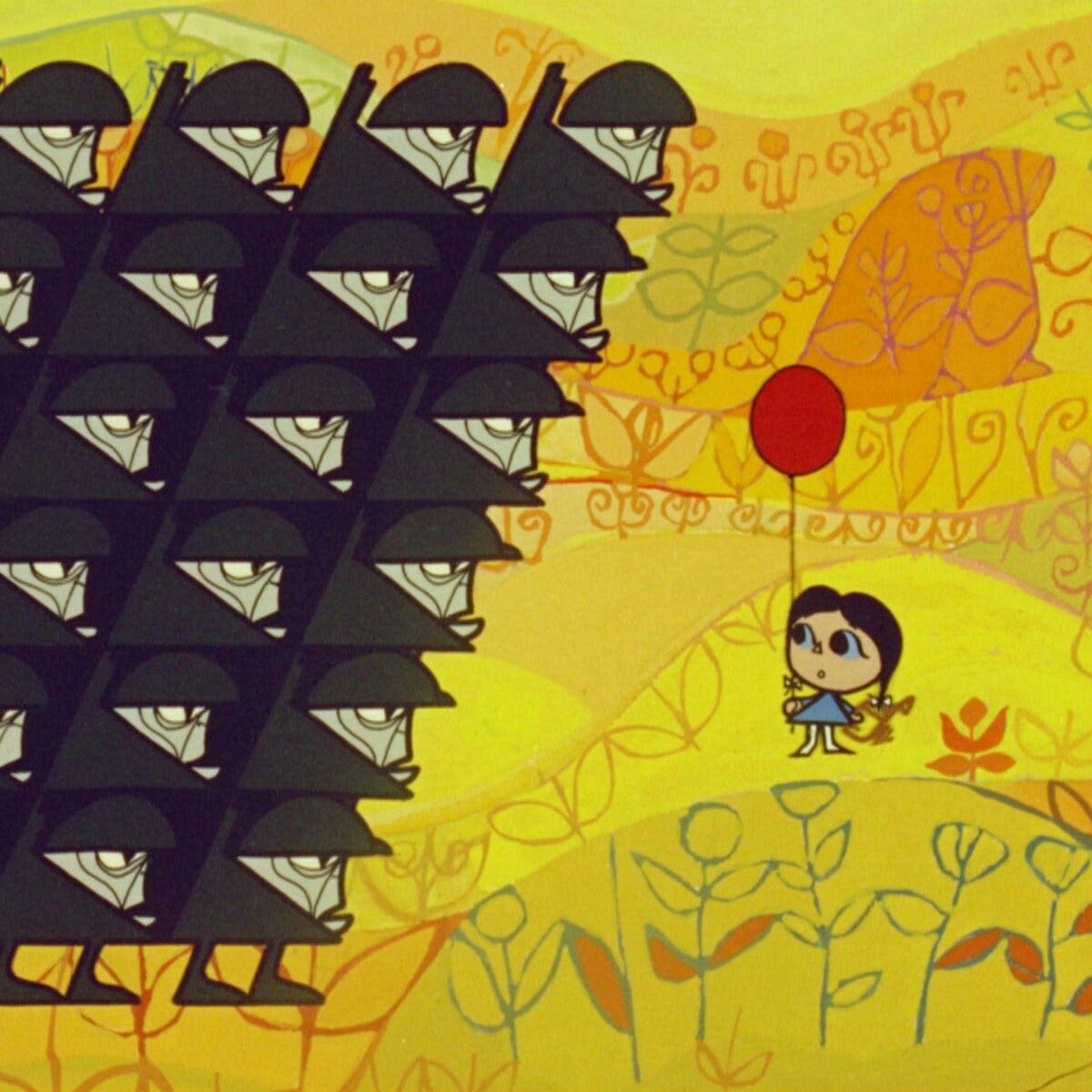Our Colors Within : the Universal Language of 'Chromophobia' by Belgian Animation Legend Raoul Servais
Whenever obscurantism and oppression triumphs, one can always count on artists to keep up the fight, eventually turning darkness into light.
After a much-needed break last Friday, our journey into the wonders of Belgian animation continues with a flashback this week, as I’m happy to share one of my all-time favorites : Chromophobia by Raoul Servais (1928-2023).
Funnily enough, it seems to be the first time I write about it professionally, even though I’m pretty sure it followed me throughout my cinema studies where I had the chance to meet Servais in an eye-opening masterclass in 2014.
But as one travels the history of animation in Belgium, it’s difficult to go past this one, a short film made almost sixty years ago and — sadly enough — still relevant today.
In this short, the fourth one directed by Servais and released in 1965, grey legions invade the world of colors with the intention of imposing the total domination of black-grey-white.
Resistance will come in the form of a very Belgian jester, the scarlet Tyl Uylenspiegel from Flemish legend, whose chromatic tricks will bring about the return of color and happiness into the hearts of humanity.
But the jester isn’t the first one to resist oppression and tyranny. The painter, Servais’ own avatar in the film, starts using his art as a form of resilience in the face of domination. And he’s also one of the first characters to step up and help the jester in overthrowing the grey regime.
Born in 1928 in Belgium, Servais suffered heavily from the Nazi Occupation of Belgium between 1940 and 1944. And one can sense that this not-so-far past still haunts him in this piece.
It makes sense that this short, the first one made professionally by Servais, was sponsored by the Belgian Ministry of Culture and Education. At the time, professional animation was almost non-existent in Belgium, and short film form in cell animation remained very costly to attain.
But cell animation wasn’t Servais’ first love, as you can see by browsing his later shorts. In Chromophobia, animation remains simple and caricatural, with very limited backgrounds.
Even so, Servais manages to get to the essence of what oppression is about, bringing forward war imagery and strong metaphors of mass-media consumption, power dynamics and military domination over freedom.
In the setting of Flemish-inspired cities, color is slowly but surely banned, before coming back with a bang through the vivid imagination of the jester, the painter and the little girl.
And, with evident yet powerful imagery, Servais underlines that violence may overcome one resilient voice, but it’s powerless over bigger numbers, as the jester and the crowds rise up to overthrow the grey regime, depriving it of its coercive power little by little.
Chromophobia may not be Servais subtlest film, but as an artist’s cry for freedom of speech and art, it’s a very powerful one.
And one that can still be very much on point today, as populist politicians are again stepping into power, despite all reason.
If History can’t teach us to remind ourselves of our own troubled past, maybe art can provide a more vivid picture of what was, and what could become yet again.
In that case, Chromophobia is more relevant than ever. And what better way to put it forward than to share it here?
The short is easily viewable online, but you can also find more info about it on Raoul Servais’ Collection website, where you can purchase DVDs of Servais’ works restored with the help of Cinematek.
We will definitely go back to Raoul Servais for other pieces. But in the meantime, enjoy this one, as it may bring a bit of hope in a gloomy week. It did for me at least, and I hope it will be the same for you.
Have a great animated weekend,
Kevin






Nice!